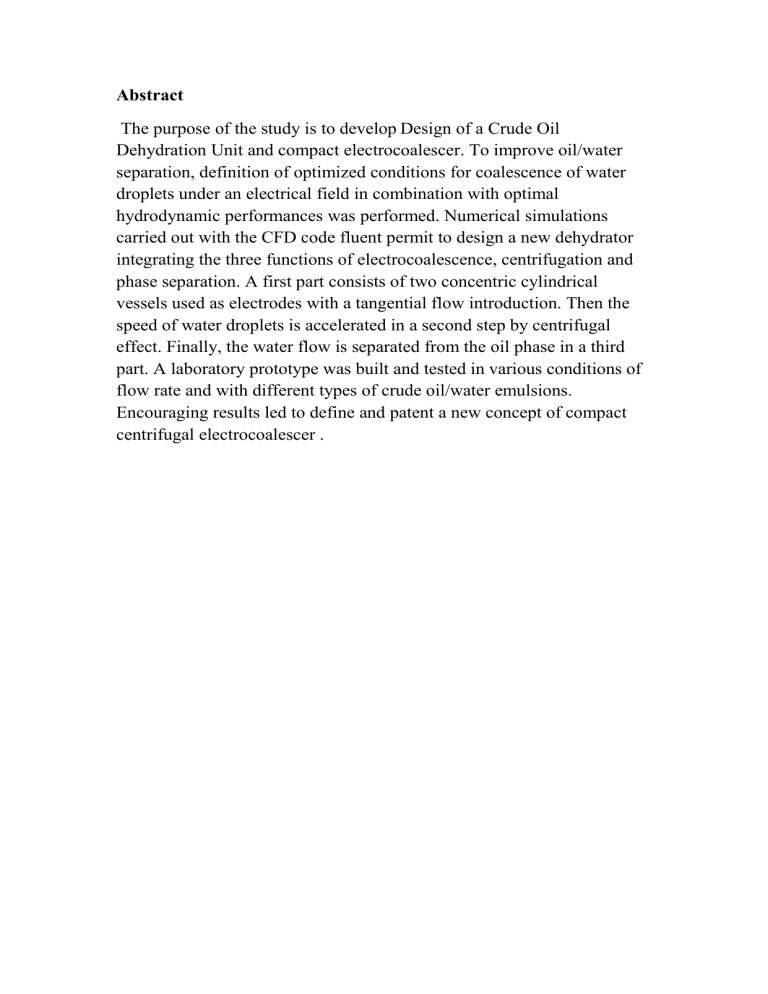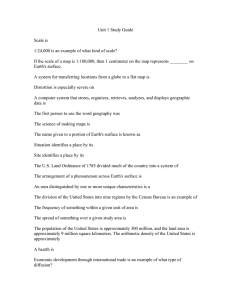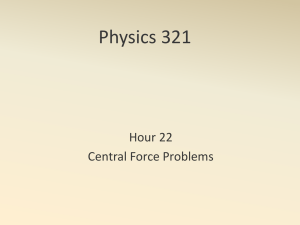
Abstract The purpose of the study is to develop Design of a Crude Oil Dehydration Unit and compact electrocoalescer. To improve oil/water separation, definition of optimized conditions for coalescence of water droplets under an electrical field in combination with optimal hydrodynamic performances was performed. Numerical simulations carried out with the CFD code fluent permit to design a new dehydrator integrating the three functions of electrocoalescence, centrifugation and phase separation. A first part consists of two concentric cylindrical vessels used as electrodes with a tangential flow introduction. Then the speed of water droplets is accelerated in a second step by centrifugal effect. Finally, the water flow is separated from the oil phase in a third part. A laboratory prototype was built and tested in various conditions of flow rate and with different types of crude oil/water emulsions. Encouraging results led to define and patent a new concept of compact centrifugal electrocoalescer . Introduction Crude oil dehydration is the removal of water or water vapor from crude. oil, by separating the oil from the water, often in a rotating centrifuge Crude oil contains water that must be removed to levels that meet pipeline specifications before refining into upgraded petroleum products. This process is known as crude oil dehydration . The aim of crude oil dehydration is to remove free water from the oil and then to break the oil emulsions to reduce the remaining emulsified water in the oil. High levels of water in crude oil make fractional distillation difficult. Water has a hard time vaporizing from the boiling flask and getting through the distillation column packing. Water drops in the distillation column head causes fluctuation in the vapor temperature causing inaccurate vapor temperature readings. D2892 requires that crude oil samples have 0.3% water or less. If the crude oil sample has more than 0.3% water then it must be dehydrated before the D2892 test can be performed. Conversely, heavy, sour crude oils are usually “wet”. As the nature of crude oil changes continuously as the producing field is depleting, the production process must be adapted to this evolution. In offshore conditions, the challenge of primary and secondary separation as well as dehydration becomes critical due to the lack of place on the platform. A compact electrocoalescer will have the advantage of being smaller and lighter than traditional ones and thus easier to install on a platform and reduce the CAPEX. Furthermore, the possibility of revamping is restricted. Moreover, it is noteworthy that the efficiency of desalting and dehydration of produced oil decreases in the presence of heavy components in oil that induce the formation of stable emulsions. Traditional application of electrostatic methods implies that the separation unit has to be sized in order to keep a satisfying efficiency during the life-time of the producing field, while emulsion breakers additives are used. Water in crude oil can be in various forms free water emulsified water chemically bound water Problems caused be water in crude oil: 1. Because water is heavier than crude oil it sits on the bottom of the boiling flask with all the crude oil above it. When the water vaporizes a “bump” may be heard and there may be violent shaking of the distillation apparatus as the water tries to break through to the surface of the crude oil. Many times the water does not escape and returns to the bottom of the boiling flask. 2. When water does escape from the crude oil into the distillation column packing. It may not having enough energy to stay in the vapor phase. Water beads on the stainless steel column packing and so it doesn’t freely flow back down the column packing to the boiling flask. The water has a difficult time going up the distillation column or down. It is trapped in the packing. 3. When water finally makes it to the condenser it can get “stuck” there. Water beads on glass and so doesn’t freely flow back down to the reflux area to be collected. When water does flow back down there are 6 to 1 odds that it will be returned to the distillation column. 4. Water forms a droplet on the vapor temperature probe and the vapor temperature decreases. When the water droplet falls from the end of the temperature probe, the vapor temperature goes up. Numerical Part Design of a new dehydrator system was intensively supported by numerical simulations carried out with the CFD code FLUENT. Previous design A first step was to evaluate the electrostatic coalescer previously patented by IFP. In this system, elctrocoalescence of water droplets and their separation from oil by centrifugation are performed simultaneously. Water is assumed to be collected at the bottom of the system and dehydrated oil recovered at the top. There is no great difficulty to simulate this straightforward configuration and, at first glance, its main deficiency can be detected: the centrifugal flow induced by the tangential input cannot be sustained all along the coalescer because of oil high viscosity (Figure 2). It resulted in a very poor separation between oil and water as it is shown by simulation post calculus: for an oil recovery ratio of 80 % (the quantity of oil recovered) the mean separation rate was 30 % (the percentage of water separated from oil). This rate depends very weakly on oil flow, confirming that water separation is not at all achieved and that fluids have probably been re-mixed when they have reached the bottom of the system. Conclusions clearly came out : it is certainly more convenient to operate coalescence and centrifugation sequentially, because separation is more efficient when water droplet size is maximum. Thus, centrifugation must start after coalescence. due to oil high viscosity, fluid rotation cannot be maintained without a guiding device, for instance an helical wall. turbulence has to be carefully managed because it may break-up water droplets and minimize coalescer performance. Flow must be laminar all along coalescer and centrifugal part. New design A new system has been designed keeping in mind last conclusions. It consisted of three parts which are from upstream to downstream : 1. a coalescer, made of two concentric tubes of 1 m length with an annular space of 1 cm. Electrocoalescence is made possible by applying an electric field in this annular space. 2. a centrifugal part, made also of two concentric tubes of 500 mm length, with between them an helical wall which creates an helical duct. Diameters and annular space are reduced in order to increase flow speed and maximize centrifugal acceleration. 3. a separator, which has the hard task to pick-up water droplets that, after centrifugation, are assumed to stay close to the wall of the external tube. There are two ways to collect water, one tangential and the other axial, which correspond to two outlets. Dehydrated oil is directed upward, inside the inner tube. Turbulence is intense in this part and the challenge is to collect water droplets before they have broken and been dispersed. Design of this part is very critical and needs imperatively the help of a CFD code to be achieved in a reasonable time. Simulation results All results presented, corresponded to simulations carried out with the same design and the same computation procedure. Volume meshing has been carefully sized with almost 100,000 cells, mainly hexahedral. General CFD is of a classical type, with turbulence taken into account by a K-epsilon model and near wall flow handled by standard wallfunctions. Interactions between water droplets and oil are treated by a special model named “Algebraic Slip Mixture Model” and proposed by FLUENT among multiphase models. It differs from classical Volume of Fluid (VOF) models in enabling phases to be interpenetrated and to move at different velocities. Thus, a special algebraic equation must be solved for the relative velocity and acceleration of particles takes into account all forces in presence, such as gravity and centrifugal force, and proximity of other particles. The model only needs data specifying physical properties of fluids in presence and droplet diameter of secondary phase (water in our case). Boundary conditions must also specify volume fraction of secondary phase at inlets. Main flow patterns are completely determined when pressure values at inlet and outlets are fixed. For all calculus, balance between inlet and outlets are adjusted in order to achieve an outflow of 20 % at bottom of dehydrator (“water” outlets) and 80 % at the top (“oil” outlet). It is important to point out these data, because separator performances are closely linked to them. Simulations led to general flow patterns that corresponded to the expected flow design. Figure 4 and 5 showed that the fluid streams had normal characteristics and the velocity magnitude levels were sufficiently low to maintain Reynolds number well beyond critical values. Thus, flow remained laminar all along coalescer and centrifugal parts. presents profiles of rotating velocity component induced by helical duct in centrifugal section. Centrifugal acceleration can be evaluated from spinning magnitude of this component and, in this case for 1 m3 /h (1000 l/h), it reaches nearly 270 m/s2 , that is 27 G. Values for other flow rates can be roughly estimated in proportion to the square of flow rate. Simulations enabled to good analysis and understanding of the process.For instance, examining Figure 7 it is easy to track and study water droplet concentration all along the centrifugal part. It clearly appears on Figure 8 that concentration is completed very gradually and that at end water is confined like a skin close outside centrifugal wall. The separator task is then to trap the water layer without breaking it and mix again the oil/water phases. Spinning velocity component in centrifugal part (1000 l/h) Performances 1- Water droplet size : presents separation performances versus droplet size, this for different oil flow rates. These results are computed with oil data recovery fixed at 80 % and water volumetric ratio at 5 % at the inlet. Curve shapes indicated that centrifugal forces segregates water droplets according to their weight. The abrupt and quasi-linear variation at midpoint resulted from a competition between two forces: the centrifugal force (proportional to the cube of diameter) and the drag force (proportional to the square of diameter). System performances versus water droplet size for different oil flow rates. 2- Total flow rate : confirms the great influence of flow rate on performances. Linear variation of fraction of water separated versus flow rate could be related to the facts that if centrifugal force is proportional to the square of flow velocity, residence time in centrifugal device is inversely proportional to flow rate. Slope decreasing observed for flow rate above 3 m3 /h is a representative of insufficient resisdence time in the centrifugal part. This underlines that centrifugal length is a significant parameter, just like helical pitch. Influence of oil flow rate on water separation Conclusion By removing the saline solution and free aqueous formation from the crude oil, the mineral salts represent calcium chloride, sodium chloride, and other inorganic solids. The removal of these impurities is done with separation and separation technology by using electrostatic separation technology where it exposes the emulsion of water and oil to a controlled high-voltage electric field, this causes the electric field of emulsion suspended in the oil to become polarized and heal with each other to form larger drops As the It is used in such units as high .gravitational pulls down, it expels out voltage transformer (12kV, 16.5 kV, 20 kV, 23 kV, 25 kV), 100% Impedance and impedance reactor. References 1. J.S. Eow, M. Ghadiri, A.O. Sharif, T.J. Williams, Chem.Eng. J. 84 (2001) 173-192. 2. S.E. Taylor, Trans IChemE, 74 (part A) (1996),526-540. 3. P.H Janssen, C. Noik, C.Dalmazzone, Proc. SPE Annual Technical Conference and Exibition, New-Orleans, 2001, SPE 71473. 4. C.Dalmazzone, Oil & Gas Science and technology - Rev. IFP, 55 (2000), 3,281-305. 5. O.Urdahl, N.J. Wayth, H. Fordedal, T.J. Williams, A.G. Bailey, Encyclopedic Handbook of Emulsion Technology ed. J. Sjöblom (2001) 679- 693. 6. G.W. Sams, F.L. Prestridge, M.B. Inman; US Patent 5565078, 1996 7. J.P. Berry, S.J. Mulvey, A.G. Bailey, M.T. Thew, T.J. Williams, N.J. Wayth, O.Urdahl, Us Patent 6136174 A1, 2001 8. I. Presvost, A.Rojey. US Patent 5 643 469,1997 9. O.Urdahl, K.Nordstad, P.Berry, N.Wayth, T.Williams, A.Bailey, M.Thew, SPE Production & Facilities, February 2001,4-8 10. J.Trapy, C. Noik, French Patent EN01/06217





